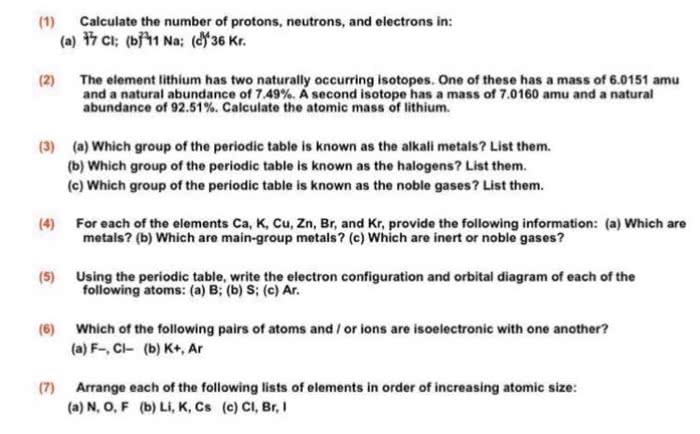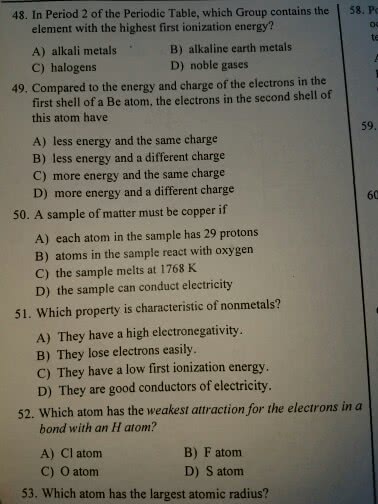CHEM 1410 Chapter Notes - Chapter 5: Alkali Metal, Isoelectronicity, Alkaline Earth Metal
Document Summary
Metallic character increases towards the bottom and the left of the periodic table. Most reactive elements (react readily with h2o) are towards the bottom left of the periodic table. Transition metals are in the d subshell. Group 1a (alkali metals) tend to lose 1 electron and have a +1 charge. Group 2a (alkaline earth metals) tend to lose 2 electrons and form +2 ions. Positive and negative ions are formed when main group elements at opposite sides of the periodic table combine. Alkali metals react with nonmetals in group 7a (halogens) Can lose electrons from s or d subshells. Transition metals exhibit a strong range of colors. Atom with lower avee/electronegativity loses its electrons in an ionic compound. Oxygen is one of the most reactive non-metals. Ionic bond: between a metal and a nonmetal. Transfer of electron density from metal to the non-metal. When ion compounds dissolve in water they break apart into aqueous solutions of the ions they contain.



